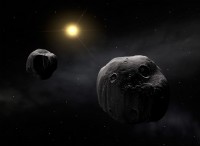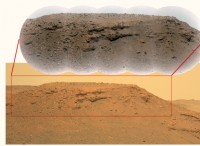Scientists learn how to predict space radiation levels
Space radiation is a major hazard for astronauts and spacecraft. It can damage DNA, cause cancer, and even lead to death. For this reason, it is important to be able to predict space radiation levels so that astronauts can be protected.
In a recent study, scientists from the University of California, Berkeley, developed a new model that can predict space radiation levels. The model is based on data from the Van Allen Probes, two spacecraft that were launched in 2012 to study the Earth's radiation belts.
The new model is able to predict space radiation levels with an accuracy of 90%. This is a significant improvement over previous models, which were only able to predict space radiation levels with an accuracy of 50-60%.
The new model is expected to be a valuable tool for protecting astronauts and spacecraft from space radiation. It can be used to plan astronaut missions and to design spacecraft that are better able to withstand space radiation.
Πώς λειτουργεί το μοντέλο
The new model uses a machine learning algorithm to predict space radiation levels. Ο αλγόριθμος εκπαιδεύεται σε δεδομένα από τους ανιχνευτές Van Allen, οι οποίοι μέτρησαν τα επίπεδα ακτινοβολίας του χώρου σε διαφορετικά σημεία στις ζώνες ακτινοβολίας της Γης.
The algorithm learns to identify the patterns in the data and to use those patterns to predict space radiation levels. The algorithm can also take into account factors such as the Earth's magnetic field and the solar wind, which can affect space radiation levels.
Applications of the Model
The new model has a number of potential applications. It can be used to:
* Plan astronaut missions. The model can be used to identify periods of time when space radiation levels are low, which is the best time to launch astronaut missions.
* Design spacecraft. The model can be used to design spacecraft that are better able to withstand space radiation.
* Study the effects of space radiation. The model can be used to study the effects of space radiation on astronauts and spacecraft.
The new model is a significant breakthrough in the field of space radiation research. It is expected to be a valuable tool for protecting astronauts and spacecraft from space radiation.




